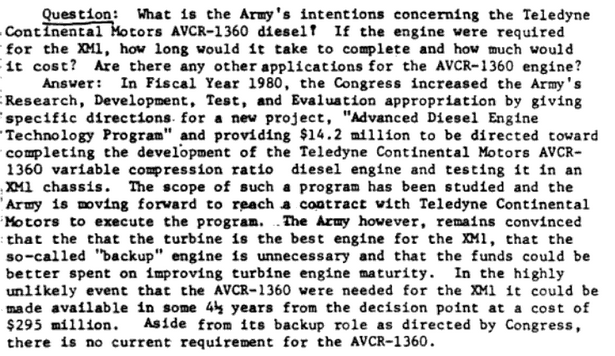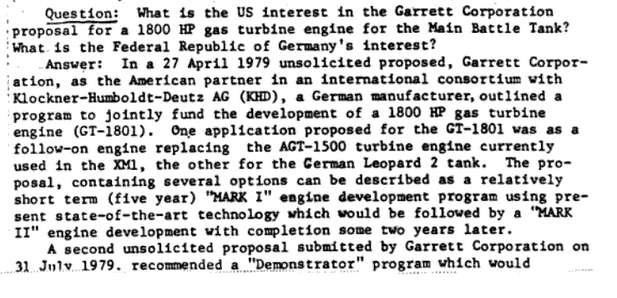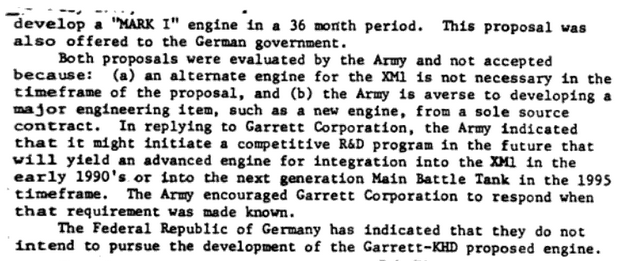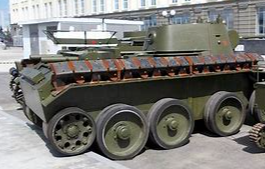It looks like some of the weight savings is coming from the turret armor needing to cover less vertical space thanks to the unmanned turret being lower. I'm also curious as to whether they recovered some of the fuel volume lost in the front end by adding elsewhere in the hull.
There's nowhere else to add fuel, unless the engine is tranversely mounted or something. Advanced Powertrain is supposed to be smaller than legacy engines but who knows if that's true for the M1 powerpack. In which case you can recover a single front fuel cell, maybe two? Honestly, they're probably making up the range losses by a combination of using a diesel and simply not caring too much about it.
M1's range is the least of its concerns.
...what.
1,500 HP at 55 tons is 27 hp/t, which is pretty close to the ideal tank pwr of ~30 hp/t. It's absolutely necessary and if anything it should be higher, at 1,600 HP or something. Right now, the M1 has as much power-to-weight at the moment as a M4 Sherman. The AbramsX is literally just restoring M1's mobility to what it was in 1985, i.e. actually modern mobility, rather than WW2 mobility.
The ACT just means a normally wimpy diesel can propel like a turbine and you're getting actually good mobility out of the 1,500 HP instead of mere adequate mobility. AbramsX probably has a sprocket hp/t of around 23-25 whereas M1 (the old M1) is 18. Of course that 1,500 HP will be good for, if the US Army buys it, when AbramsX inevitably grows to 75 tons again, because the Army made every road wheel independently electrically powered or something.
The real question is whether or not AbramsX's track and flotation are up to snuff to keep up with that fat sprocket power. HOTROD was also around 25 hp/t on the sprocket, even if it used older technology, and it was really good until it wasn't. So AbramsX might need wider tracks, or track extensions, or grousers or something, to take advantage of its power fully in soft soil.
Of course AFAIK the M113 HOTROD was never actually bad in any soil conditions by any metric, just in a couple it was worse than M1.
I don't quite understand why 30 hp/t should be considered the ideal power-to-weight ratio for furure MBTs
...
Because the HIMAG studies showed that 30 sprocket horsepower/ton was great in offroad performance given adequate flotation.
We're literally just now approaching this. The fact that it took 40 years to go from the mid-teen's of sprocket horsepower is in line with the past. It took 40 years to get out of the single digits of sprocket horsepower you saw in WW2.
I expect in another 40 years we might be asking ourselves if tanks really need bigger engines to take advantage of 95-98% efficient transmissions and breach the 30 hp/ton sprocket horsepower barrier that HIMAG established. But that will only be after new mobility trials and more powerful automotive testbeds with higher sprocket horsepowers are tested. Tanks of the future may also very well be heavier than 55-tons standard, but that would require improvements in road infrastructure. We're still using 20th century infrastructure in much of the developed world.
You can literally google 'Advanced Combat Transmission' and find a report on it:
http://gvsets.ndia-mich.org/documents/MOB/2020/Mobility_1110_Advanced Powertrain Demonstrator Integration_Paper.pdf
Put simply, more power is a crutch for when transmissions are bad. Transmissions are no longer as bad as they were in the 1970's, so you can have 1,500 HP engines providing far more sprocket horsepower than they used to. Less powerful engines are also more fuel efficient, although this is fairly minor tbh and stuff like EFI or engine control computers can do this just as well.
The ACT can give 1980's mobility (~16-18 shp/ton) to a 55-ton main battle tank with a ~900 HP engine. Alternatively, you can achieve the HIMAG mobility requirements with a ~1,500 HP engine (26 shp/t) on the same tank. WW2 level of mobility could be achieved with a 500 hp engine. This assumes an approximate 90% capture of the net horsepower. With a previous generation transmission, you'd need 1,500 HP, 2,200 HP,. and 750 HP respectively, net horsepower, because older transmissions capture approximately 70% of net horsepower, as stated in Ogorkiewicz's
Technology of Tanks.
Besides bigger engines demanding bigger tanks, power densities have shrunk engine sizes obviously: How is it the AbramsX is able to field a survivable crew capsule in the front of the hull that eats the front fuel cells and still have adequate fuel for comparable range to the M1A1? Because that tiny engine in the back is surrounded by more fuel cells, obviously!
Why is this confusing? I literally do not understand.
There are monumental, tremendous differences in mobility beyond "horsepower".
As for how ACT is possible, I dunno? Something about having oodles of gears and fancy lubricant to keep temperatures down, and the torque converter is gone (poof). Torque converters result in around 10-15% efficiency loss to heat, with another 10-15% from gear ratios. Eliminating the converter is probably the biggest reason ACT is so efficient and then you get a couple single digits percentage improvement in heat loss from having zillions of gears (it has 64 gears, although you can add more I suppose).
However, I'm not a mechanical engineer, nor do I work for GDLS Canada, so I only know the barest rudiments of the subject like "engine spins metal cylinder with exploding piston". I just know that ACT is what would be necessary to achieve HIMAG performance and it took about 40 years to get there. Which is coincidentally 40 years it took to go from WW2 sprocket horsepower (8-10) to 1980's High Mobility shp (16-18). Perhaps in another 40 years we can breach the 30 shp/t barrier? Who knows.
Efficient and powerful transmissions for vehicles are always a technically interesting task, but it is by no means a hurdle for Western industry to produce a compact tank transmission for, say, 2,500 hp.
Good thing they made a transmission for 1,500 HP then so they don't need to make a 2,500 HP engine?
Mobility isn't about gross output of the engine my guy. It's about sprocket power, flotation, and traction
and armor protection.





